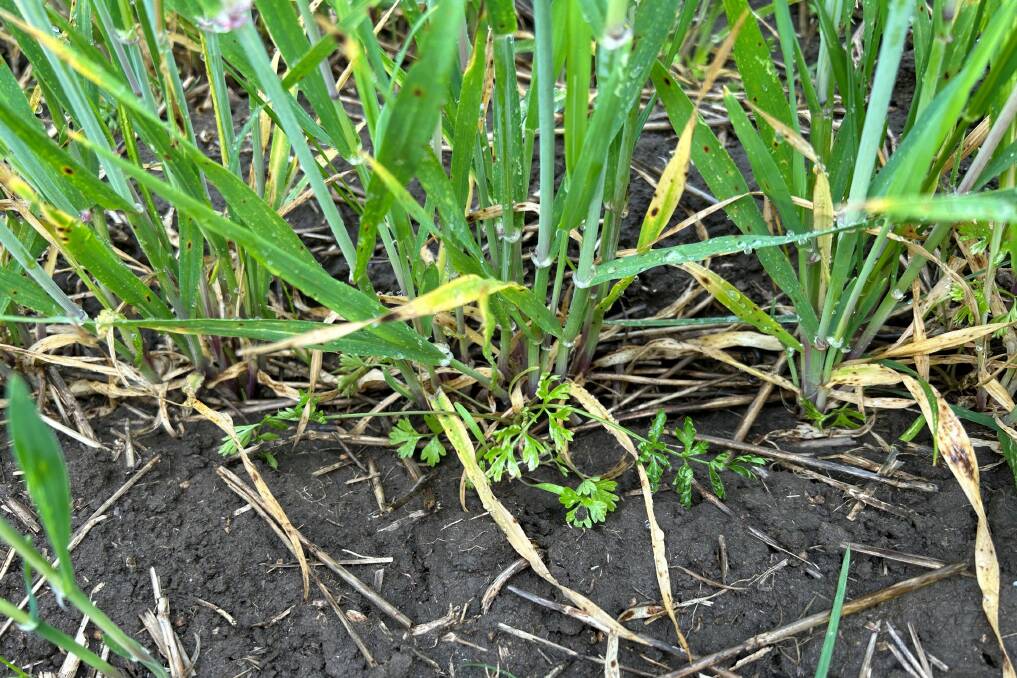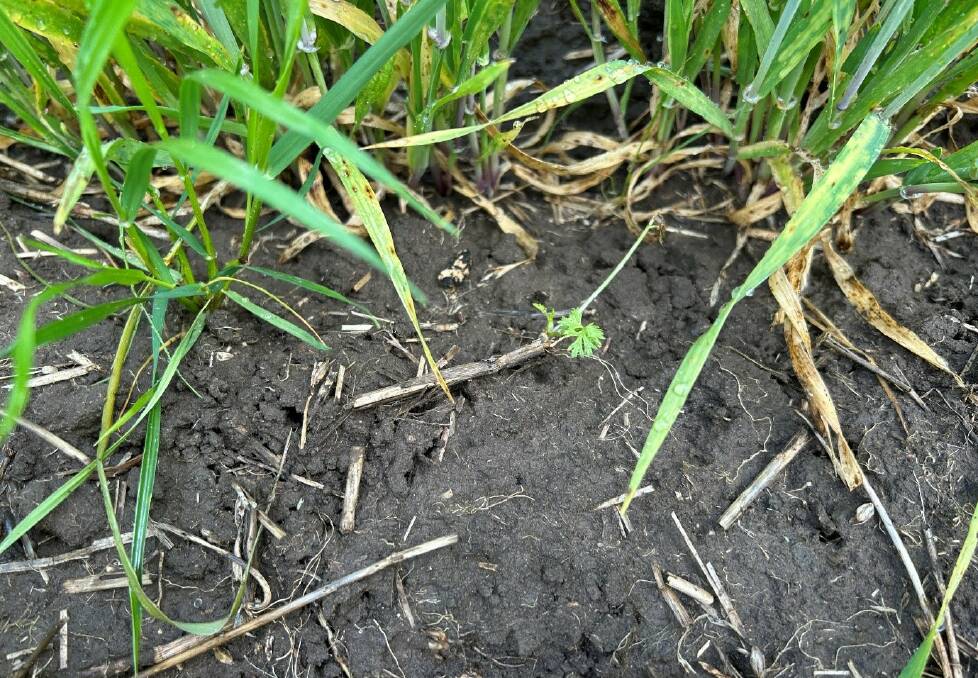More flexible broadleaf weed control paying off in cereals

This is branded content for ADAMA Australia
CEREAL growers are enjoying improved flexibility and results with their broadleaf weed control after the arrival of key herbicide tank mix partners that, importantly, also are proving to be cost-effective.
The Group 2 post-emergent herbicide, Priority®, is boosting weed control from a range of broadleaf herbicides and now can be applied with additional herbicides from next season to help further broaden its weed control spectrum.
Developed by ADAMA Australia, Priority contains florasulam, an acetolactate synthase (ALS) inhibitor, in a suspension concentrate formulation and once absorbed via weed foliage, it is translocated to the growing points via the xylem and phloem.
Matt Coffey, Agronomist with Elders at Yarrawonga in Victoria, said wild radish, volunteer canola and Paterson's curse were some of the major broadleaf weed targets in cereal crops through the region and herbicide mixes with Priority were increasing to help combat them.
Mr Coffey supports growers from Lake Rowan in the south, up to Berrigan in Southern New South Wales, and he said the application flexibility with Priority, including with late fungicide treatments, was one of its key attractions.
"It has a very good weed control spectrum and it can be applied with clopyralid and amine to suit a wide range of growth stages," Mr Coffey said.
"We have some big canola areas, so growers are not always able to get their early broadleaf applications done in cereals.
"However, at that stage, Priority with Triathlon® is a great mix, and whether it's with herbicides like amine, Talinor® or Precept®, Priority can give control a boost and help with herbicide rotation.
"It can be a good alternative to Paradigm, providing good compatibility, reliability, flexibility and cost-effectiveness."
He said weather events and related trafficability issues can affect the use of other herbicides that have more specific application timings, however this was where the extended application window with Priority was a big benefit.
"This is why we like to leave the use of this chemistry until later, as a result of the flexibility it offers. And we are very comfortable with its length of control."
"Underpinning the product is Group 2 chemistry, so we also need to be careful to protect this chemistry."
Mr Coffey said the flexibility with Priority also extended to re-cropping options following its application, particularly on acidic soils, where there can be re-cropping restrictions after using other herbicide mixes."
Alistair Crawford, Market Development Manager with ADAMA Australia in Victoria, said Priority had shown strong capability to be mixed with various herbicides for improved control of key broadleaf weeds in cereals including volunteer pulses and wild radish, but also of other brassica weeds.
"It is playing a bigger role now in the post-emergent space, with growers also not wanting to use clopyralid on stubbles due to its binding characteristics," Mr Crawford said.
"Priority also can now be applied in a tank mix with Affinity® Force and MCPA 750 herbicides without a wetter. This mix also can be used to target the difficult bifora weed, which is more prevalent around Horsham, as can new tank mixes with Quadrant® and Triathlon® herbicides.
"Compared with other contact herbicides, Priority is systemic and can improve bifora control, especially when there is some shading from the crop or other weeds when spraying," he said.
Andrew Parkinson, Agronomist with Nutrien at Riverton in the Mid North region of South Australia, said Priority's application with tank mix partners was, importantly, adding another mode of action and achieving improved weed control.
This benefit has been highlighted in the control of weeds such as bedstraw and wild vetch.

Mr Parkinson said around Riverton in the Mid North, other major target broadleaf weeds in wheat, barley, oats and durum wheat crops included Indian hedge mustard and charlock, as well as volunteer pulses and canola.
"We have found its activity on wild vetch and non-imidazolinone tolerant pulses and canola has been good, and it's got some good activity on bifora," Mr Parkinson said.
"Traditionally, growers applied 2,4-D Amine or LVE MCPA as their main mixing partner, but also dicamba, clopyralid and metsulfuron-methyl, whereas now Priority is a very good addition.
"It has a great weed control spectrum, it is competitively priced, which makes it particularly attractive in drier areas, it is soft on crops in terms of phytotoxicity and it can be used over a range of crop growth stages, so we are very happy with it.
"It's also very compatible with a range of fungicides and insecticides, and it has a short plantback profile, which allows good re-cropping flexibility for growers."
For further information on the use of Priority post-emergent herbicide as a tank-mix partner against broadleaf weeds in cereal crops, growers can contact their local ADAMA Australia representative or click HERE.
This is branded content for ADAMA Australia


